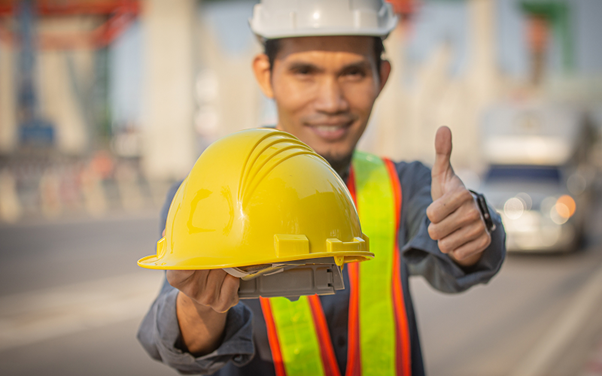When you picture a construction site, chances are the first image that comes to mind is a worker wearing a bright yellow helmet. The construction safety helmet has become a symbol of protection, authority, and responsibility in hazardous environments. From preventing head injuries caused by falling objects to providing visibility in chaotic worksites, helmets play an irreplaceable role. The hard hat remains a central piece of personal protective equipment in Singapore to keep workers safe, productive, and confident.
Making Safety Helmets Practical
The best safety gear is the one workers wear consistently. For a construction safety helmet to truly serve its purpose, it must integrate seamlessly into daily work routines. Modern helmets go beyond being protective shells. Many now come with add-ons like visors, earmuff attachments, or reflective strips, ensuring workers combine multiple layers of safety into one piece of equipment.
In Singapore’s humid and often sweltering climate, ventilation systems in helmets have become just as important as their impact resistance. If a helmet causes discomfort, workers may be tempted to adjust it improperly or remove it altogether, creating unnecessary risk. That’s why manufacturers are designing hard hat models with lightweight materials and adjustable suspension systems, ensuring they can be worn all day without fatigue.
Integration also extends to training. Workers need to understand why helmets matter, not just how to wear them. Employers who embed helmet usage into morning briefings, toolbox talks, and safety culture initiatives encourage consistent adoption. When helmets are seen as part of one’s “uniform” rather than an inconvenience, compliance naturally improves.
Tracking the Impact of Helmets
How do we know helmets are making a difference? The early signs of success are often subtle but telling. Injury reports in workplaces with strict helmet policies show fewer cases of traumatic head injuries, even when accidents occur. Statistics across industries demonstrate that helmets are precautionary and effective in reducing serious harm.
Regulatory bodies such as the Ministry of Manpower require that the standards for personal protective equipment in Singapore be met for all construction workers. This strict oversight has created a measurable reduction in accident severity over the years. Anecdotal success stories like a falling tool that bounced off a hard hat rather than causing a hospital visit, or a crane operator saved from injury by his helmet during a minor mishap.
Beyond the numbers, early success is visible in worker confidence. When employees see colleagues protected in near-miss situations, the value of helmets becomes undeniable. This creates a positive feedback loop, with a greater belief in the equipment leading to more consistent usage, further lowering risk across the site.
When Helmets Became Non-Negotiable
There was a time when safety helmets were seen as optional in some industries. Workers often resisted them, citing discomfort or lack of perceived risk. The turning point came with growing awareness of workplace accidents and the irrefutable evidence that head protection saves lives.
In Singapore, landmark policies mandating the use of helmets at construction sites and industrial facilities created a culture shift. The construction safety helmet stopped from being a negotiable item and became a baseline expectation. Employers began investing in higher-quality helmets to comply with the law and protect their reputation and workforce.
Globally, innovations in helmet technology marked another turning point. The traditional hard hat evolved from a basic plastic shell to a sophisticated piece of gear incorporating shock absorption, ergonomic adjustments, and compatibility with other PPE. As industries grew more complex, helmets adapted, ensuring that safety kept pace with technology and working conditions.
Today, no reputable company would allow workers onto a construction site without helmets. This universal acceptance highlights how turning points in policy, technology, and culture combined to cement helmets as indispensable tools of safety.
Helmets as Everyday Heroes
The humble construction safety helmet may not look dramatic, but its impact on workplace safety is profound. Integrated into daily routines, proven through early successes, and reinforced by critical turning points in regulation and technology, helmets continue to serve as everyday heroes on worksites. Personal protective equipment standards in Singapore are rigorously enforced, and helmets are a compliance gear, with commitments to worker dignity and safety. The evolution of the hard hat proves that safety adapts, improves, and becomes inseparable from the way industries operate.
Next time you walk onto a worksite, ask yourself: Is your helmet just sitting on your head, or is it actively protecting your future? Take safety to the next level with SafetySam today.

